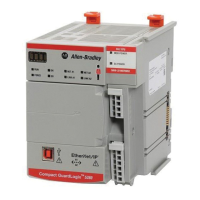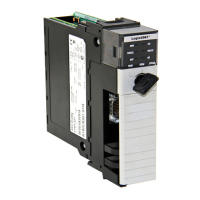Behavior models used in CIP Motion
76 Rockwell Automation Publication MOTION-RM003I-EN-P - February 2018
describing a rapid back and forth motion of the axis centered on the commanded
position as it overcompensates for the sticktion.
To address the issue of dither when applying Static Friction Compensation, a
Friction Compensation Window is applied around the current command position
when the axis is at rest. If the actual position is within the Friction Compensation
Window, the Static Friction Compensation value is applied to the Servo Output,
but scaled by the ratio of the Position Error signal to the Friction Compensation
Window. Within the window, the position loop and velocity loop integrators are
also disabled to avoid the hunting effect that occurs when the integrators wind up.
Thus, once the position error reaches or exceeds the value of the Friction
Compensation Window attribute, the full Static Friction Compensation value is
applied. Of course, when the Friction Compensation Window be set to zero, this
feature is effectively disabled.
A non-zero Friction Compensation Window has the effect of softening the Static
Friction Compensation as it's applied to the Torque Reference and reducing the
dithering and hunting effects that it can create. This feature generally allows
higher values of Static Friction Compensation to be applied, resulting in better
point-to-point positioning.
Sliding Friction Compensation
Sliding friction or Coulomb friction, by definition, is the component of friction
that is independent of speed as long as the mechanical system is moving. Sliding
friction is always less than static friction for a given mechanical system. The
method of compensating for sliding friction is basically the same as that for static
friction, but the torque level added to the Torque Reference is less than that
applied to overcome static friction and is determined by the Sliding Friction
Compensation attribute. Sliding Friction Compensation is applied only when the
axis is being commanded to move.
Viscous Friction Compensation
Viscous friction, by definition, is the component of friction that increases linearly
with the speed of the mechanical system. The method of compensating for viscous
friction is to multiply the configured Viscous Friction Compensation value by the
speed of the motor and apply the result to the Torque Reference signal. Viscous
Friction Compensation is applied only when the axis is being commanded to
move.
See also
Torque Filters on page 77
Torque Control Behavior on page 71

